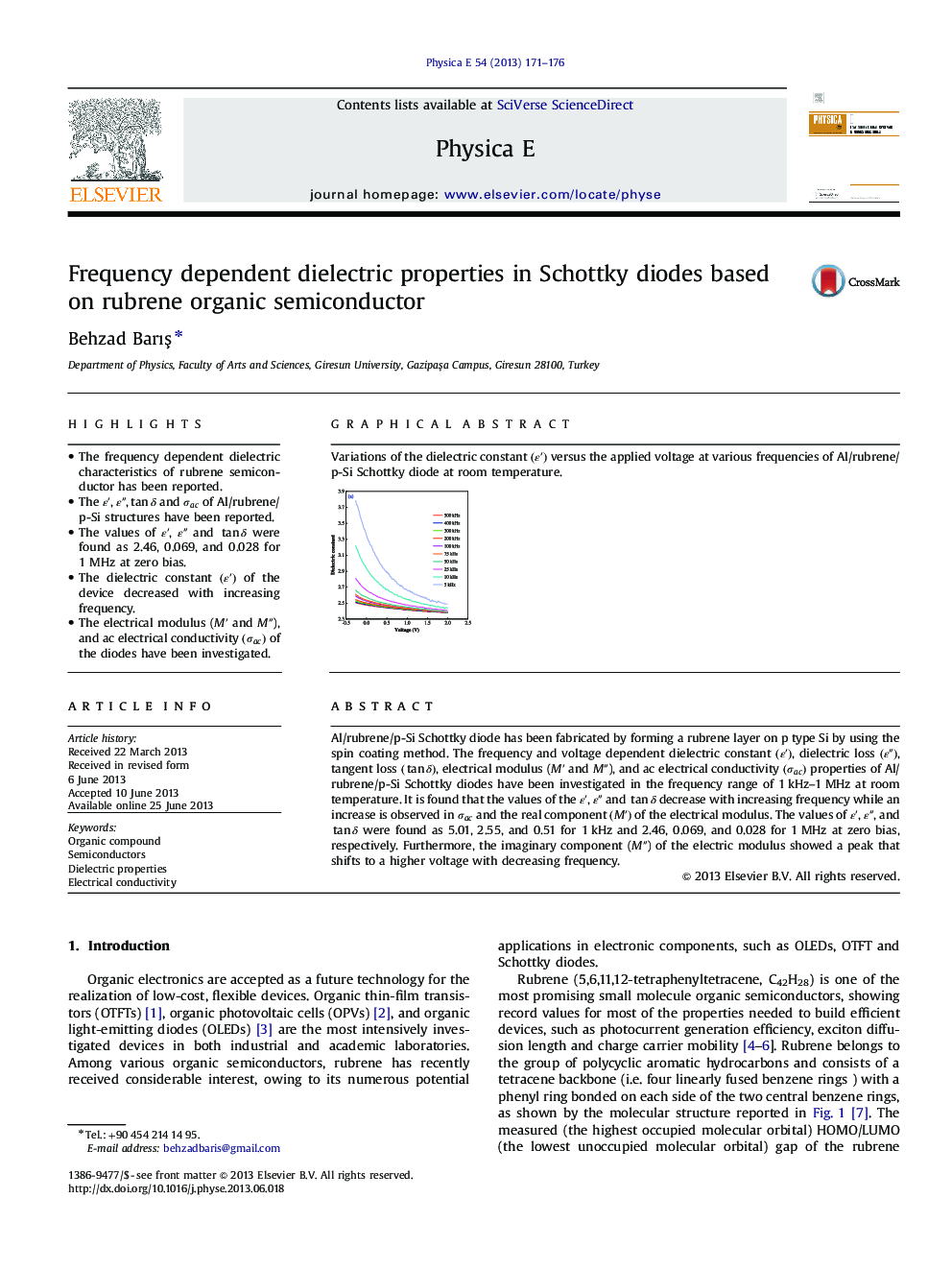| Article ID | Journal | Published Year | Pages | File Type |
|---|---|---|---|---|
| 1544688 | Physica E: Low-dimensional Systems and Nanostructures | 2013 | 6 Pages |
•The frequency dependent dielectric characteristics of rubrene semiconductor has been reported.•The ε′ε′, ε″ε″,tanδtanδ and σacσac of Al/rubrene/p-Si structures have been reported.•The values of ε′ε′, ε″ε″ and tanδtanδ were found as 2.46, 0.069, and 0.028 for 1 MHz at zero bias.•The dielectric constant (ε′)(ε′) of the device decreased with increasing frequency.•The electrical modulus (M′M′ and M″M″), and ac electrical conductivity (σac)(σac) of the diodes have been investigated.
Al/rubrene/p-Si Schottky diode has been fabricated by forming a rubrene layer on p type Si by using the spin coating method. The frequency and voltage dependent dielectric constant (ε′)(ε′), dielectric loss (ε″)(ε″), tangent loss (tanδ)(tanδ), electrical modulus (M′M′ and M″M″), and ac electrical conductivity (σac)(σac) properties of Al/rubrene/p-Si Schottky diodes have been investigated in the frequency range of 1 kHz–1 MHz at room temperature. It is found that the values of the ε′ε′, ε″ε″ and tanδtanδ decrease with increasing frequency while an increase is observed in σacσac and the real component (M′)(M′) of the electrical modulus. The values of ε′ε′, ε″ε″, and tanδtanδ were found as 5.01, 2.55, and 0.51 for 1 kHz and 2.46, 0.069, and 0.028 for 1 MHz at zero bias, respectively. Furthermore, the imaginary component (M″M″) of the electric modulus showed a peak that shifts to a higher voltage with decreasing frequency.
Graphical abstractVariations of the dielectric constant (ε′)(ε′) versus the applied voltage at various frequencies of Al/rubrene/p-Si Schottky diode at room temperature.Figure optionsDownload full-size imageDownload as PowerPoint slide
